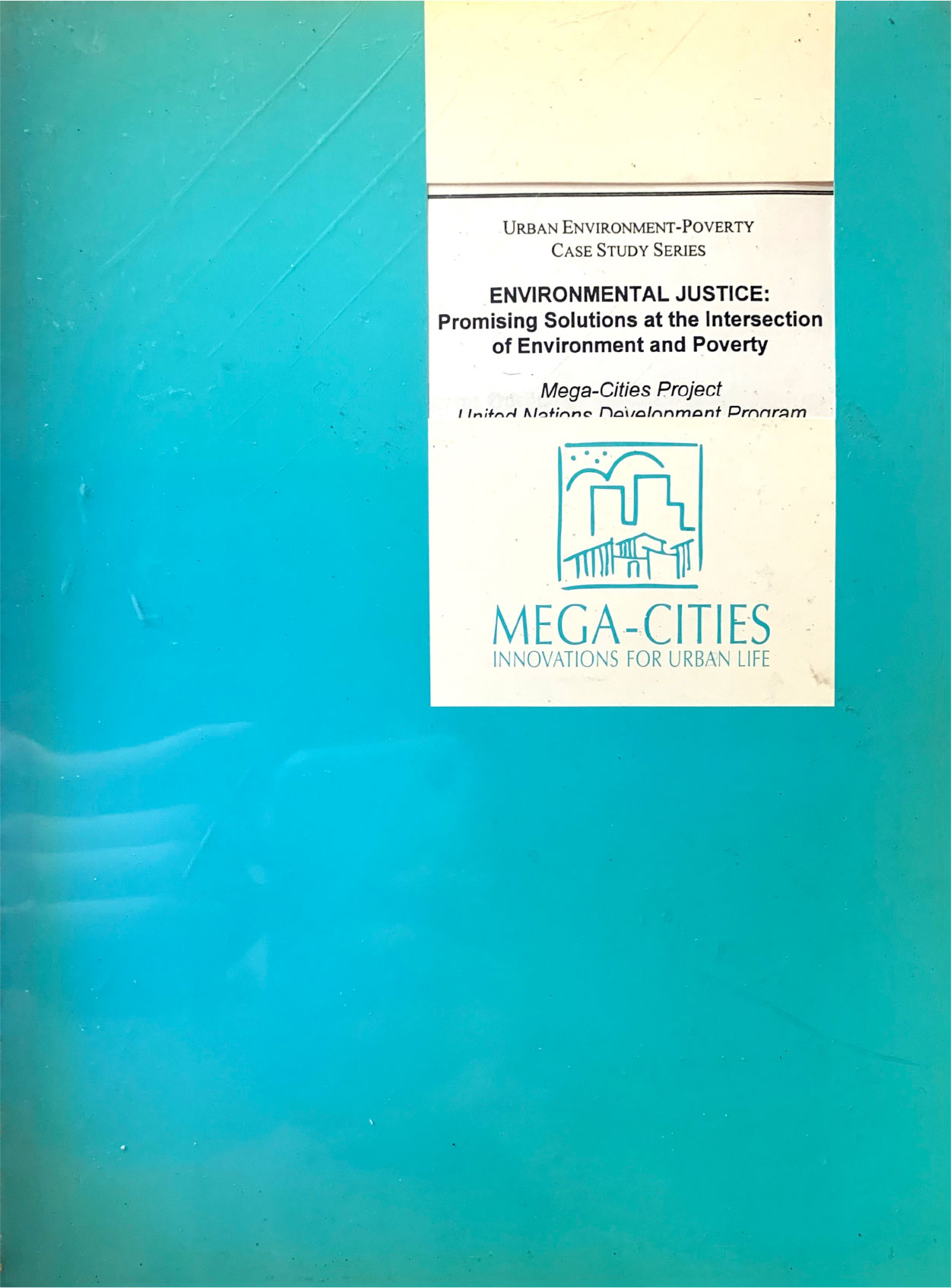Since our inception, The Mega-Cities Project has been engaged with the critical intersection between urban environment and income generation.
The concepts of urban environmental regeneration (Rodale), of urban metabolism (Abel Wolman, Herbert Girardet), the urban ecological footprint, (William Rees, Mathis Wackernagel), and resource-conserving cities (Richard Myers) were part of our founding principles. It took decades for environmentalists to stop seeing cities as the enemy of environmental sustainability and recognize that density would be less polluting than sprawl.
It took even more time to recognize the link between urban poverty and environmental preservation. Again, the poor were blamed as the problem rather than included in a vision of the solution.
Our teams in each of the mega-cities conducted an in-depth search for innovations that both helped reduce poverty and reduce environmental degradation. Collectively we found several dozen of such initiatives and selected the most impressive for Case Studies.
The Lessons we learned from analysis of these case studies are shown in the box below:
|
PERLMAN PRINCIPLES POVERTY-ENVIRONMENT NEXUS: LESSONS LEARNED FROM 20 MEGACITIES Given the magnitude of climate change concerns and the worldwide concentration of population and economic activities in cities, it is not surprising that many regard cities as the enemy of environmental sustainability. This misinformed perception has created counter-productive incentives and anti-urban policies that exacerbate the problem. The premises for moving towards a sustainable and equitable future include: (1) There can be no global ecological sustainability without urban ecological sustainability.
(2) There can be no urban environmental solution without alleviating poverty. The urban poor tend to occupy the most ecologically fragile areas of our cities, such as steep hillsides, low-lying swamplands, or adjacent to hazardous industries. In addition, their lack of resources often prohibits them from having adequate water, sewage, or solid waste management systems. Without alternative locations to settle and sufficient income to cook and keep warm, their survival will increasingly be pitted against environmental needs. (3) There can be no lasting solutions to poverty or environmental degradation without building on bottom-up, community-based innovations. Since creativity was not distributed along lines of race, class, or gender, experts and policymakers are not always the best source of system-transforming innovations. The most creative and resource-efficient solutions to urban problems tend to emerge at the grassroots level, closest to the problems being solved. And, without local participation in implementation, even the best ideas are doomed to failure. (4) There can be no impact of scale without sharing what works among leaders and scaling up into policy. While small may be beautiful, it’s still small and the problems are enormous. In order to have meaningful impact, micro-initiatives need to be replicated across neighborhoods and cities through peer-to-peer learning or incorporated into public policy frameworks. (5) There can be no urban transformation without changing the old incentive systems and “rules of the game.” Since every sector of urban society holds a de facto veto on the others, local innovations can never achieve scale with cross-sectoral partnerships involving government, business, NGOs, academia, media, and grassroots groups. We need to create a climate conducive to experimentation, mutual learning, and collaboration. (6) There can be no sustainable city of the 21st Century without social justice and political participation, as well as economic vitality and ecological regeneration: Innovations that promote ecological regeneration are just one piece of the puzzle. It is only by seeking out innovations in social equity, participatory democracy, and economic productivity— and ideally, innovations that possess all four attributes— that our cities can be truly be sustainable for the 21st Century and beyond.
|
Click The Cover to Read:

